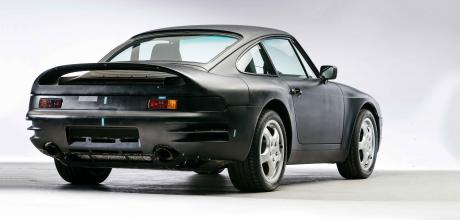1988 Porsche Type 965 Prototype
The story of Porsche’s sub-959 supercar The 965 could have replaced the Turbo outright – and even introduced a V8 engine. But it never got beyond a prototype, as Total 911 discovers… Written by Tim Pitt Photography by Ali Cusick.
TYPE 965 EIGHTIES FACTORY V8 TURBO PROTOTYPE
Type 965 Porsche’s project 965 was an aborted attempt to replace the 930 Turbo. Total 911 brings you the full story
The early 1990s was something of a purple patch for performance cars. In 1989, Nissan launched the third-generation (R32) Skyline GT-R, a turbocharged giant-killer packed with motorsport hardware. A year later, Honda delivered the NSX, a visceral mid-engined supercar that was as docile to drive as a Civic. Then came the Ferrari F355, complete with the first production paddle-shift gearbox and a feral 8,500rpm V8.
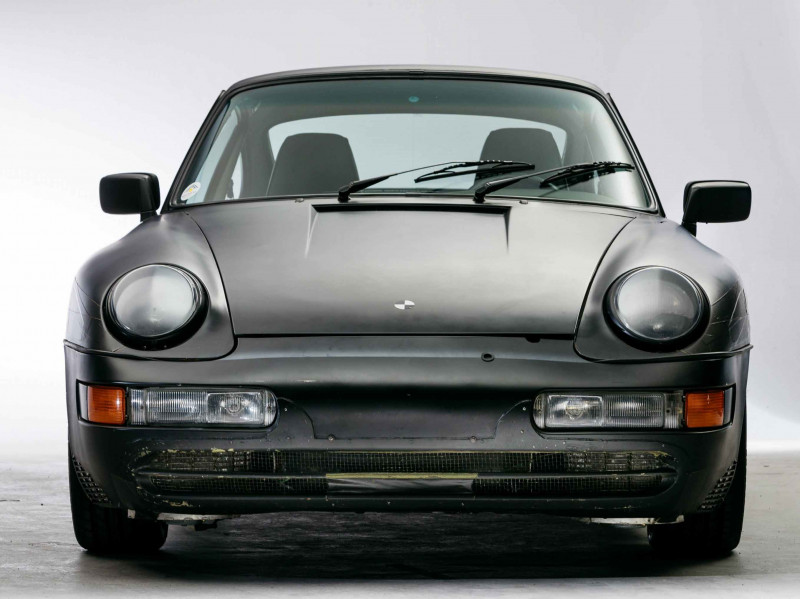
These cars burned bright, but hidden in a secret warehouse near Zuffenhausen is one that could have extinguished them all. According to Dieter Landenberger, head of corporate history at the Volkswagen Group, it was planned as “a cheaper successor to the 959” – and a standalone replacement for the 930 Turbo.
“The 965 project may have been dead, but it finally bore fruit in the 964 Turbo 3.6”
The 965 story is one of admirable ambition and cruel commercial reality, of game-changing technology and thinking outside the box (the single surviving prototype, for example, has an Audi V8 engine). However, both the 964 and 993 Turbo owe something to this failed hero. In this article, we’ll explore the 965’s development and look at its legacy. Let’s begin in 1975 with the original, 3.0-litre 911 Turbo. With its widebody and whaletail, not to mention 260Bhp output, it looked and felt entirely different to the rest of the 911 range. Porsche acknowledged this by giving the Turbo its own internal Typ number: 930. It was the only roadgoing 911 singled out as such until the 964 in 1989 – and was actually marketed as the 930 Turbo Carrera in the USA.
The Turbo also faced very different competitors to the 911 Carrera, or the SC that followed. It squared up to big-league supercars like the Aston Martin V8 Vantage, Ferrari 512 BB and Lamborghini Countach. Against the odds, the hot rodded 911 held its own, both in terms of speed and bedroom-wall glamour, and became one of the undisputed icons of the 1980s. Who can picture the Thatcher-era King’s Road or Reaganite Wall Street without imagining a Guards red 930 Turbo?
This heady era of free-market capitalism also gave rise to a new breed of even-more-supercar (the term ‘hypercar’ wasn’t coined until after the McLaren F1 came along in 1992). Spearheaded by the Porsche 959 and Ferrari F40, these machines raised the bar for power, performance and price. When CAR magazine tested the German and Italian rivals in July 1988, its cover line was ‘ANOTHER WORLD’.
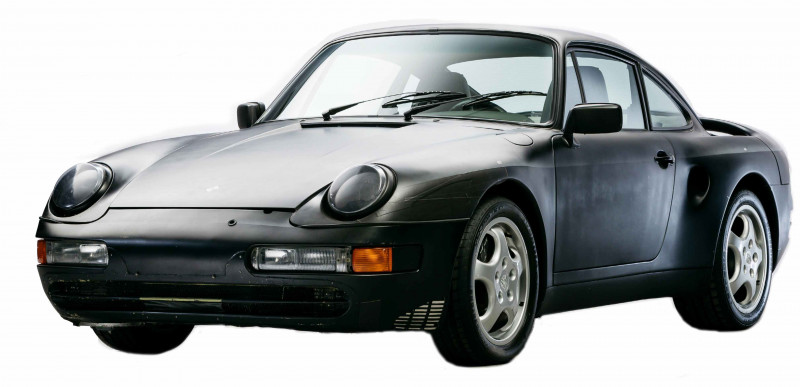
Unlike the raw and simple F40, the 959 was a technical tour de force. It showcased computer-controlled Porsche-Steuer Kupplung (PSK) four-wheel drive, electronically adjustable dampers, variable ride height, Kevlar body panels, hollowspoke magnesium wheels and plenty more. Yet despite a list price of £145,000 in the UK, every example cost twice that much to bring to market.
Even so, the 959 opened up new possibilities and, for Porsche, made space for a new, less extreme supercar underneath – one that might actually generate a profit. This was project 965 and, had it entered production, it would have been badged 969. The name, you’ll note, denotes a step forward from the 959, and the idea was to offer many of that car’s innovations for a cheaper price.
The 965 was conceived in the early 1980s and evolved alongside the 959 and 964. It would reimagine the former car’s styling, but be based on the floorpan of the latter. A target price of £75,000 at launch in 1991 was around £20,000 more than a Carrera 4, but in the same ball-park as the 964 Turbo that eventually usurped it. For reference, a Honda NSX cost £60,135 when new and the Ferrari F355 was £83,031 in 1994. The Skyline GT-R was only available in the UK as a grey import.
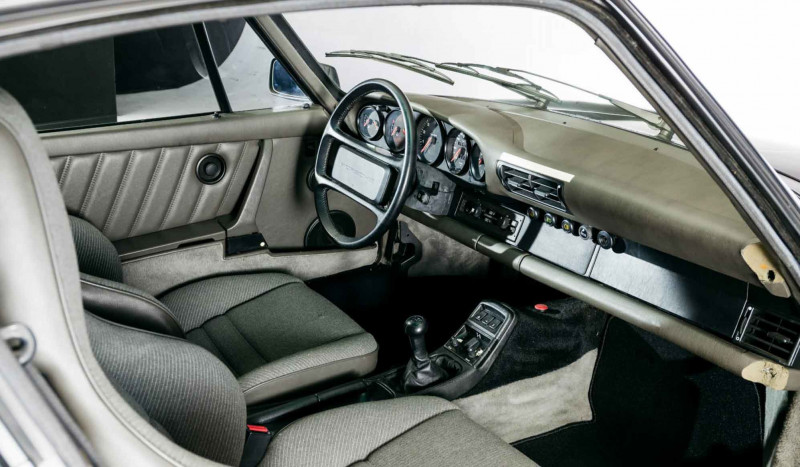
Like the 959, the 965 was originally intended to have a flat six with twin turbochargers, air-cooled cylinders and water-cooled heads. To cut costs, though, some of the 959’s racing-inspired parts, such as Nikasil-lined cylinders, forged alloy pistons and titanium conrods, would likely have been ditched. Porsche reportedly aimed for maximum power of 375hp, versus 450hp in the near-200mph 959.
Other 959 hardware in development for the 965 included four-wheel drive, adaptive air suspension and a dual-clutch gearbox (some 12 years before the Volkswagen Golf R32 and Audi TT brought the now-familiar DSG ’box to market, and 17 years before Porsche introduced PDK to the 997 Carrera). Ferrari’s automated manual ‘F1’ transmission would have looked crude by comparison.
These were good times for Porsche and the 965 was one of several radical concepts under evaluation. Notable others were the 989, an elongated 911 and precursor to the Panamera, and the 984, a budget two-seat roadster that foretold the Boxster. Sadly, the Black Monday financial crash of 1987 sent the stock market and sports car sales into freefall. Porsche needed to cut costs and the complex 965 seemed an obvious candidate.
In fact, the car survived an initial cull, alongside the departure of CEO Peter Schutz in December that year, but there were other problems to contend with. The flat six engine was being strangled by new catalytic converter legislation, and wasn’t close to its 375hp target. Engineers even considered watercooling the entire 964 range, although the predicted costs proved prohibitive. Enter the Audi V8.
The 3,562cc V8 fitted to 965 prototype L7, the only one of 17 development cars that still exists, shows Porsche responding to this lack of progress with the flat six. It comes from an Audi V8 luxury saloon – the forerunner of today’s flagship A8, launched in 1988 – and develops 250hp in standard tune, as here. A pair of turbos could doubtless have boosted it to the required 375hp and beyond.
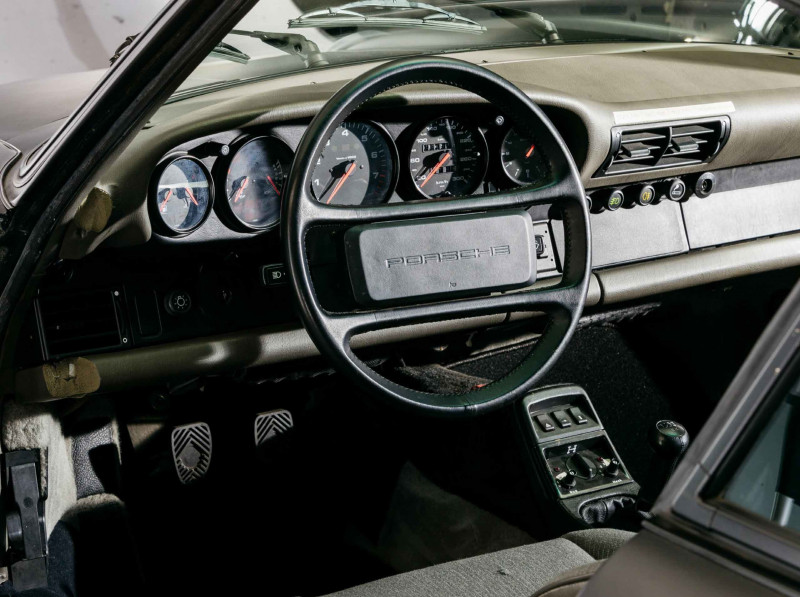
The V8 was officially used for ‘radiator tests’, yet the notion of an eight-cylinder 969 was clearly considered. Could it, by extension, have led to a V8-powered 911? The matter is moot, perhaps, but in a prototype weighing 1,435kg, even this non-turbocharged engine mustered a top speed of 155mph. As for the effect of a weighty V8 behind the back axle on the car’s handling, that isn’t recorded. We suspect ‘L7’ is quite a wild ride.
Other engines that were considered included a turbocharged V6 and a version of Hans Mezger’s 2.65-litre V8 used in the Project 2708 IndyCar racer. Eventually, Porsche settled on a 3.6-litre flat six, but even this familiar and cost-effective solution couldn’t save the 965. New R&D boss Ulrich Bez (later CEO of Aston Martin) arrived at Weissach in 1998, then halted its development soon afterwards. A year later, the 964 was launched, followed by the Turbo in 1991, though this was, at first, merely a 930 Turbo engine fitted to a 964-era body. For the 911, it was back to business as usual.
The 965 project may have been dead, but it finally bore fruit in the ‘proper’ 964 Turbo in 3.6-litre specification, which followed for the last years of 964 Turbo production. Look closely at its 360hp air-cooled engine – also offered with 385hp in rare X88 spec – and you’ll see many parts are stamped with the code ‘965’. As a result, some enthusiasts call the 1993-1994 Turbo 3.6 by this codename (Google ‘Porsche 965’ and you’ll see what we mean). Yet while it clearly owes much to the stillborn supercar, this exotic 964 retained its original Typ number.
In 1996, some of the technology planned for the 965 filtered into the 993 Turbo too. While the 964 Turbo 3.6 was essentially still an old-school ‘widowmaker’, the 993, with twin turbos to reduce lag and four-wheel drive to aid traction, felt like a true embodiment of the 965 prototype’s pioneering spirit. It ushered in a new era of sophistication for Porsche’s flagship 911 Turbo, transforming it into the crushingly competent all-weather missile enthusiasts know and love today.
Interestingly, after the loss-making 959 and the tortuous gestation of the 965, Porsche shied away from supercars for 16 years (well, unless you count the vanishingly rare homologation special 911 GT1). Also, when it arrived in 2004, the Carrera GT was the polar opposite of the 965: a back-to-basics roadster with a naturally aspirated V10, manual gearbox and rear-wheel drive. Having pushed boundaries before, this time Porsche kept it simple. Not until the plugin hybrid 918 Spyder of 2013 would it change the supercar game again.
Today, the L7 prototype is one of 700-plus historic cars in Porsche’s collection and divides its time between the archive warehouse and the official Museum in Stuttgart (depending on what is being displayed at the time). We expect many visitors probably pay it little heed, assuming it to be a 959 development mule. But the truth, of course, is even more interesting.
It may conceal some ambitious engineering, but the car nicknamed the ‘Black Bomber’ by Weissach staff is something of an ugly duckling. Its dull matte paint, arguably ahead of its time in fashion sense, does the car’s classic curves no favours, while the jutting headlamps resemble those of a 928 at halfmast. Its rather tall stance doesn’t exactly scream ‘supercar’ either.
Overall, the 965 is clearly reminiscent of a 959, with the same ‘bar of soap’ styling, circular side intakes and hooped rear wing. Its large front fog lamps and indicators seem to originate from a 928 S4, while the tail lights are temporary units mounted within a dummy, 959-style wraparound light bar. Slash-cut vents in the rear bumper and twin oval tailpipes draw upon the 959, too. The interior of the 965 also plays it safe designwise. Much of it looks unfinished, with exposed wires and temporary toggle switches. The 911’s traditional five-dial dashboard, though, is still present and correct. One noteworthy switch is labelled ‘ABD’ – the traction control system later introduced on the 993, which used the ABS sensors to detect spinning wheels and apply the brakes.
The idea of a Porsche supercar – as opposed to a hypercar like the 918 Spyder – lives on. Back in 2014, for example, Autocar predicted the arrival of a 600Bhp, eight-cylinder Porsche badged ‘988’ to take on the Ferrari 458 Italia. That car never materialised, but could have indeed been the long-delayed heir to the 965’s legacy.
Perhaps the problem, dare we suggest, is the 911 is simply too good. With ferociously quick and capable cars like the 992 GT3 and Turbo S in the range, who could realistically want for more? Not us.
Model Porsche Type 965 Prototype
- Engine Audi V8
- Drive All-wheel drive
- Maximum power 375bhp @ 6200rpm
- Maximum torque 285lb ft @ 3600rpm
- Capacity 3,562cc
- Weight 1,435kg
- Top speed 155mph
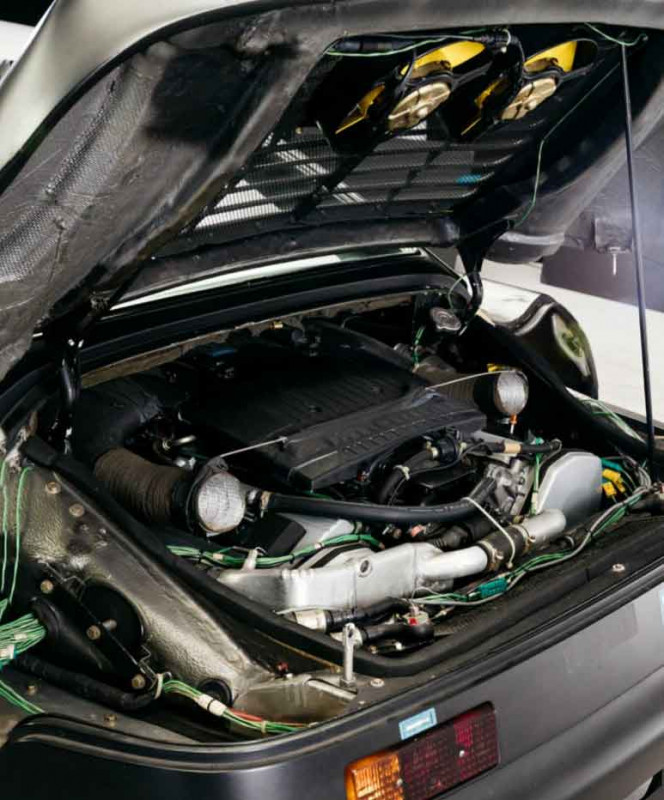
BELOW Various notes and markings from engineers at the time remain evident all over the prototype. BELOW The 965’s interior displays a mix of 959 and future 964 influence. LEFT Porsche tried different engine configurations for the 965 – seen here is an Audi V8 experiment.BELOW This is the one and only surviving Type 965 prototype in the world.


